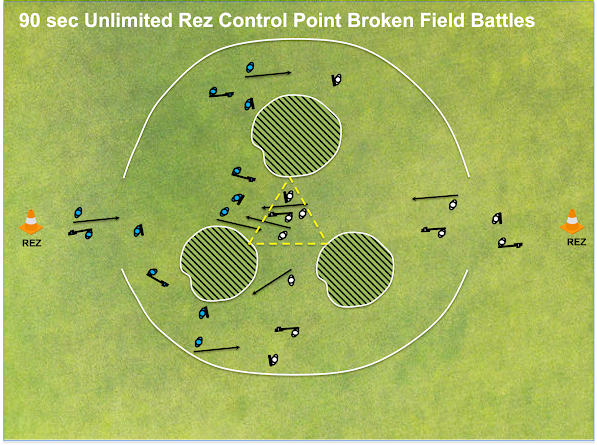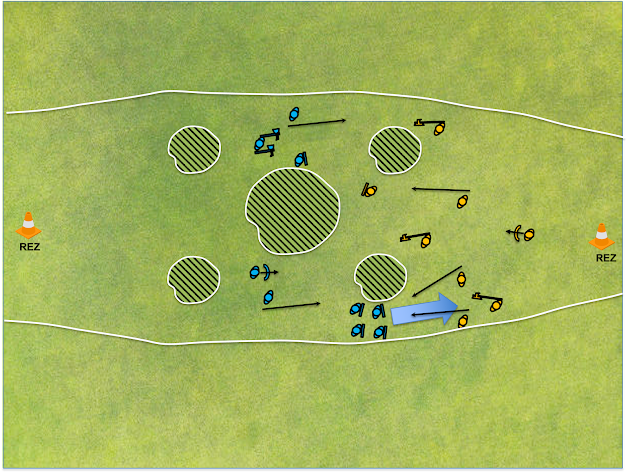Hey all,
Just a quick blog post with some thoughts from last Sunday.
We ran a series of field battles with about 15 heavy melee fighters per side plus an additional unit of 6 heavy combat archers that would swap sides every battle or so. The objective was to kill everyone on the other team. Each battle had a different unbelt captain chosen, some with no command experience at all.
In a nutshell, I think everyone figured out the basics. Split your non-archer units into two to three different units, one covering the left flank, one covering the right, and if there's a third unit, they cover the middle. Sometimes a person or two would be left in reserve, with a fighter or two who's job was to protect the archers, or to hunt the archers depending on what team the archers are on. The team that did not have the archers knew that they needed to press the attack so that they don't die from archers' fire, while the team that had the archers were not in as much of a hurry.
Both teams pretty much had a unit run right, and a unit run left, which is pretty common as neither team wants to get outflanked. There were usually some people hanging out in the middle as well. The formations were mostly what I would call a "mob" rather than any sort of organized unit. Mobs, or packs, or prides, or swarms (whichever analogy you want to use) tend to be more flexible and move faster than strict formations. With a 15 v 15, skirmish tactics become more effective. If we had, say, 700 on a side, it might make sense to have some large blocks of units in formation.
Once units got engaged it pretty much came down to deciding what the best tactic to employ would be. The options are to engage or deny (deny means to refuse the engagement, and hopefully draw the opponents out of the fight). If an engagement is decided, then do you engage at range, or press the attack with a charge?
Generally speaking, assuming equal skill, you attack if you have the numbers, and deny if you don't. If you attack, then you charge if the other side has the range advantage, or you attack aggressively with your spears if they don't.
F.L.A.N.K.S.
I personally teach the FLANKS mnemonic to help remember what to do. Consider this with each unit of 4-6 fighters in the diagram above.
F - Control your flanks, usually with your strongest shields (rarely with a spear or archer). Don't let anyone get behind you.
L - Leg 'em and leave 'em
A - Assess which team has the range advantage and act accordingly (charge if they do, stab if you do)
N - Never fight a fair fight. Always look for an advantage, or refuse the engagement
K - Know who are your killers and who are your supporters. Are you charging with your shields? Or are you stabbing with your spears?
S - Spread out your talent. Don't group your spears together, or put all of your new fighters into the same unit, or same part of the unit.
Special Plays
Sometimes it helps if you come up with some special tactics, like taking a person out of the fight, or having a team run right at the archers. These clever plays can work, but there must be a foundation of good fundamental tactics laid down first.
The Team with the Archers Often Lost
Strange. I think what happened here is that teams were picking too many people to guard the archers, which pulled them out of the fight. Or they were not being aggressive with the engagements and ended up losing to more aggressive attackers.
Keep in mind, archers are not as deadly as you might think in a field battle (while they can be incredibly deadly in a static fight). In battles like these, I'd expect most archers to only get off 1-2 shots before it's over, and with each team so heavy on shields, the entire archery unit may not get many kills. Don't get me wrong, I ALWAYS want the archers on my team, and find them to be a critical part of the army. But don't expect them to kill everyone in a small team field battle. The rest of the unit has to do much of the killing as well.













































